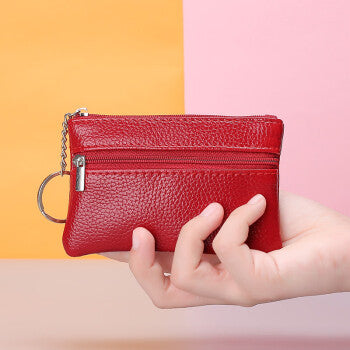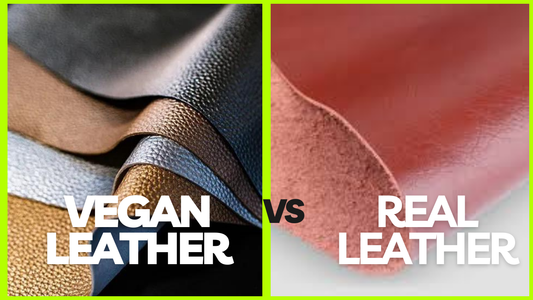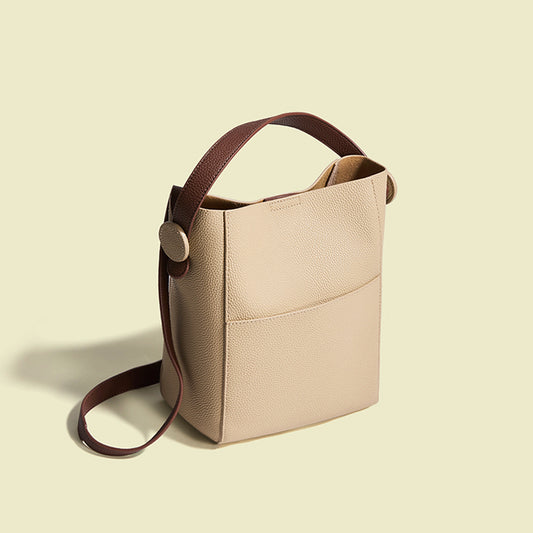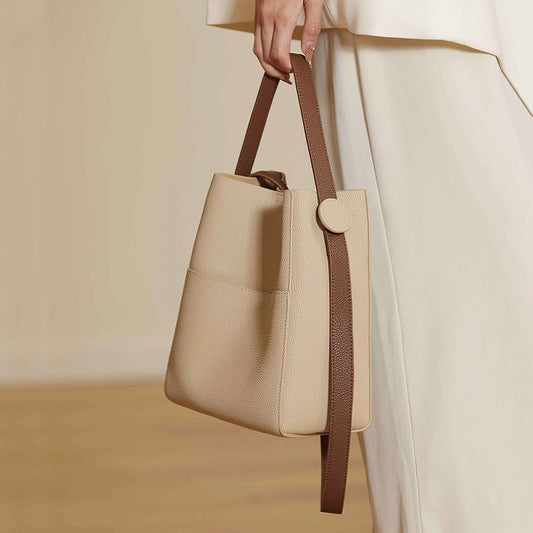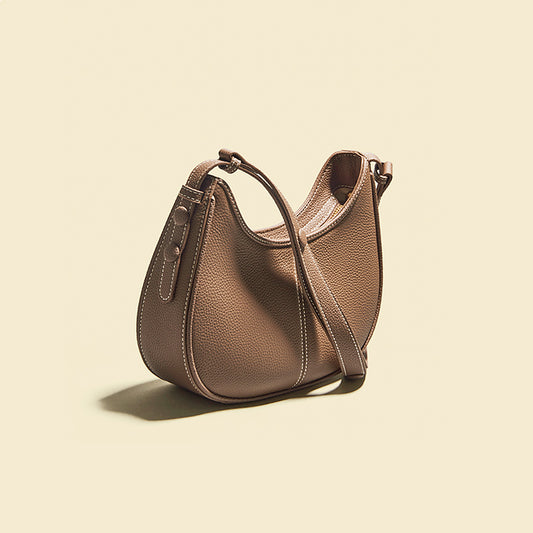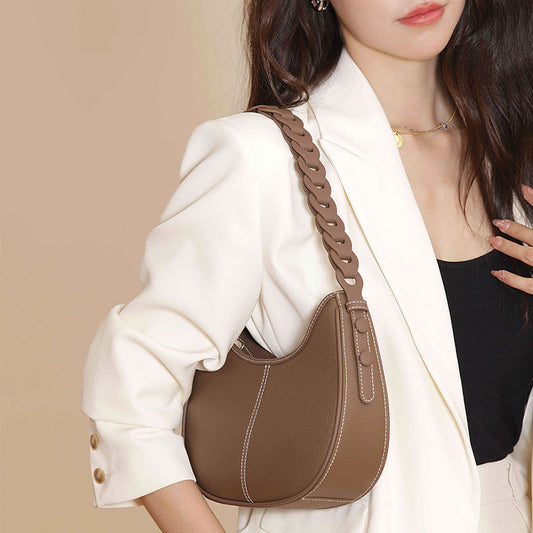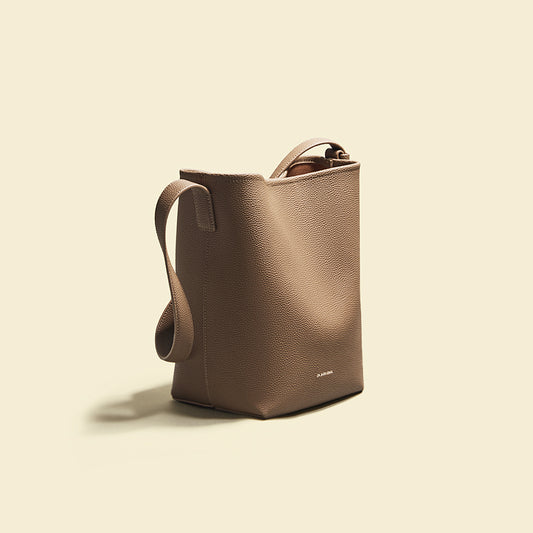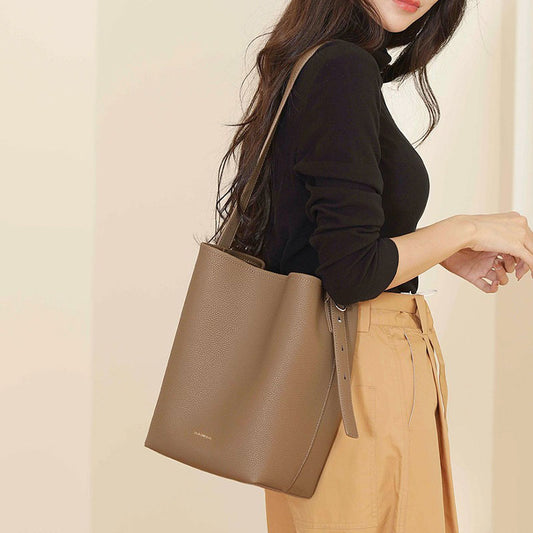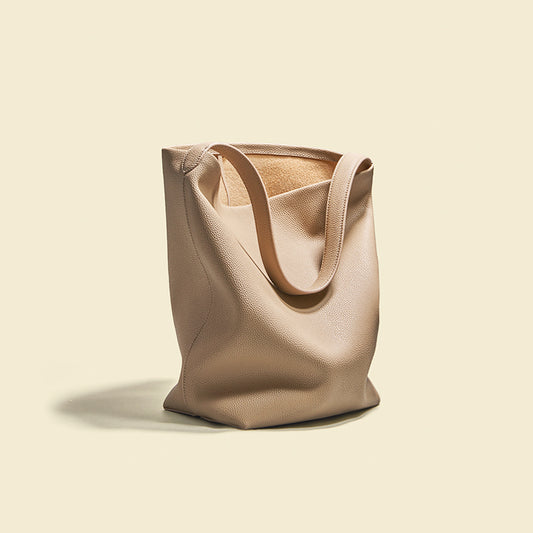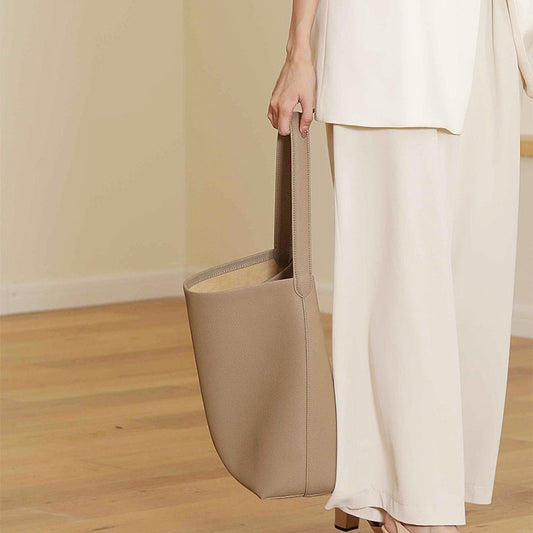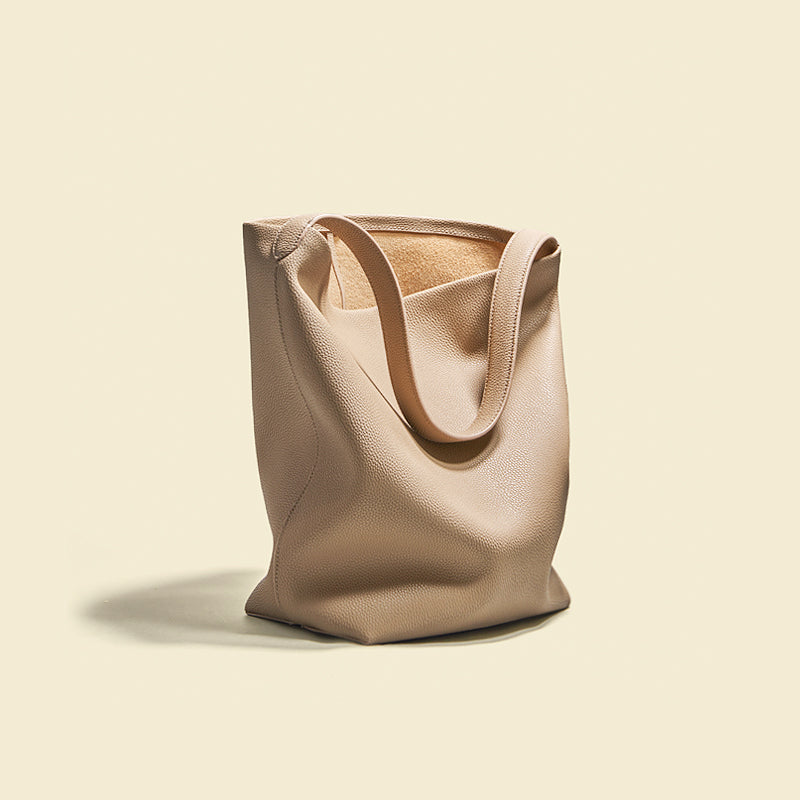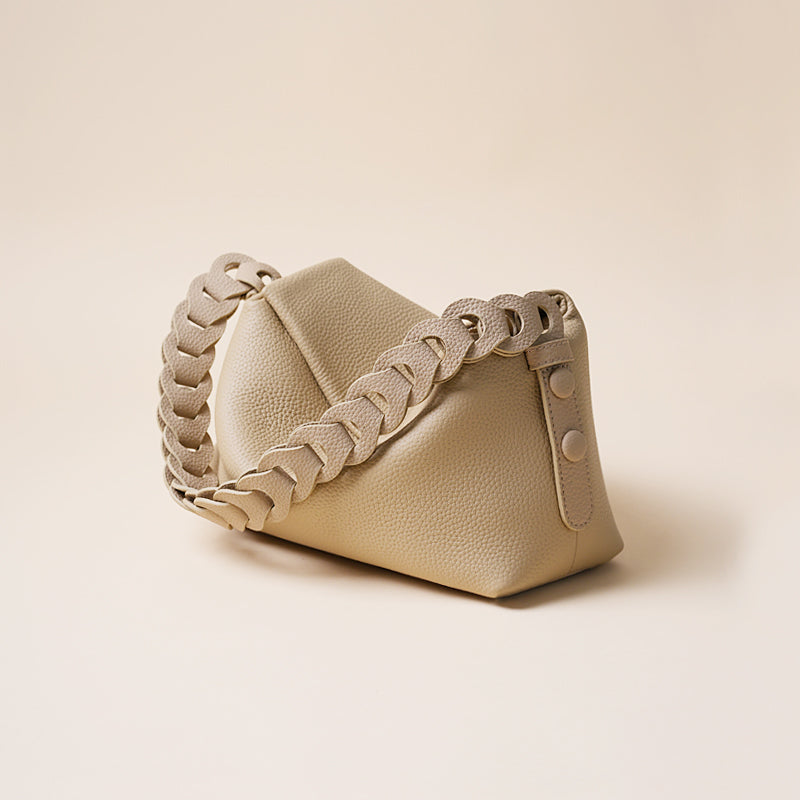At leather-purse.com we're often asked by our clients how long will their new leather bag last? Now, to be honest it's a question that is difficult to answer without knowing specific details about the bag in question (materials used, quality of build, etc.). But in this blog post, we want to give you an idea of what sort of lifespan you can expect from your new purchase. You must understand that various leathers have various characteristics. For example, nubuck tends to wear more quickly than chrome-tanned leather but generally dries out quicker and is more stain resistant. And before you ask, yes they are completely different types of leather despite their common names (nubuck comes from the base side of the leather while chrome tanned comes from the top).
Do leather bags hold up well?
What is the expected lifespan of your favorite leather bag? Wallets and purses should be replaced every few years, as you've certainly heard, but what about the leather cases you have in your daily carry?
Do you understand when to cease utilizing them?
When purchasing leather bags, there are a few common rules for assessing leather quality.
The leather will survive longer if the top layer is thicker.
The stress from a thin top causes the leather to stretch and become weaker. While a thick top won't stretch, it won't last as long as one that is thinner.
A leather purse may last up to 10 years or even longer, did you know that? This is because real leather bags are waterproof and do not deteriorate as rapidly as synthetic leather does.
Because leather is naturally resistant to environmental conditions, leather bags are nearly indestructible.
This implies that a leather bag of superior quality will survive for a long period. If you've invested in a high-quality purse, not everything needs to give way. These bags were built to last, and they were put to good use.
Describe leather.
Since the dawn of time, leather has been used for clothes and other products because it is strong and flexible.
It was originally an animal skin, but as it gets older, it starts to take on a personality and personality traits of its own.
It is a substance that is frequently utilized in the creation of consumer items, including wallets, purses, and leather shoes in addition to clothes and apparel.
Skin, stomach lining, and the exterior layer of an animal's hide are used to make leather. Chemicals are used to chemically tan the skin, removing the outer layer while leaving the inner layer unharmed.
Leather is created from the skin after it has been removed.
People have used it as decoration, clothing, and footwear for thousands of years.
At first, lambs and cows were used to make some leather; subsequently, other animals' skins, including those from horses, dogs, wild boars, and even goats, were used instead.
Leather is a robust, long-lasting substance. It is inexpensive to create and resistant to the majority of liquids as well as many gases.
You need tanned animal skin to manufacture leather. The animal skin is submerged in a solution of chemicals, salts, and tanning agents.
The process of tanning animal skin takes many days. The leather becomes pliable throughout the tanning process, enabling molding.
The type of leather will determine exactly how it is formed.
learning the subject
It doesn't necessarily have to appear like an animal's skin just because a bag is made of it!
Few people are aware that the tanning process for animal hides differs greatly from the technique used to create leather.
Two divided layers of the animal's hide with varying thicknesses are tanned to create leather.
The top layer of the hide, known as the grain layer, is split horizontally from the corium layer, which has a rough, hard inside and soft, flexible outside.
The skill of dying leather dates back to the Middle Ages. That is still the case today, and several conventional dyes are still in use everywhere.
There are, however, a lot more contemporary methods of dying available now, including anything from water-based dyes to solvent-based dyes.
Tannin, a procedure used to make the hide softer, more malleable, and less porous, is the first step in the dyeing of leather items.
The procedure starts with soaking the hide in a water-filled pit, which results in a bath of undried and grease-free leather. The hide is then stretched over a frame then compressed and stretched there.
A change in the leather's surface results in the patina process. It can be brought on by the leather's age, sunlight exposure, filth, and general wear and tear. It is a natural aging process for leather.
The leather is baked in the next stage, referred to as the "dry-out stage," until it dries. After that, the leather is colored, maybe using a dye of your choosing.
When leather is exposed to dust and sunshine, the skin deteriorates, which can cause a loss of color, scent, and smoothness.
There are several considerations when caring for leather goods.
Leather is utilized all over the world since it is a natural material with a long history and is regarded as the best material to employ when making a product.
To ensure leather's lifespan and inherent strength, it should be maintained as very durable material.
Real Leather Types
Different types of leather are used for many things, and each one has unique traits, uses, and characteristics.
- Top-grain leather
The greatest leather is top-grain leather since it is made entirely of leather. It is a natural product that hasn't undergone any processing.
When grasped, it has a buttery-soft feeling and a smooth exterior. In comparison to full grain leather, it is tougher to wear and has greater color retention.
Frequently used for premium, long-lasting goods like upholstery, vehicle seats, and expensive leather clothing.
- Full-Grain Leather
is the initially elevated layer of the hide that will be used to make the finished item.
The final result of full-grain leather will still display the same grain pattern that was present in the skin of the stock animal.
Furthermore, because it is created using the same materials that an animal's skin produces, leather is also accessible in its strongest and most natural form.
Best suited for leather purses and shoes that are worn outside of the body, away from dirt and bacteria, to prevent leather contamination.
- Genuine Leather
a kind of leather that is created from a single piece of unprocessed natural leather.
Genuine leather was used to make the vintage styles of leather garments and footwear since it was thought to be the greatest material.
Genuine leather is a phrase that refers to natural leather, the sort that is typically seen in high-end leather goods like handbags and jackets.
- Bonded Leather
a two-part process used to make leather. The two elements are the face and the grain. Bonding is done to increase the leather's tensile strength and longevity.
been sandwiched between cloth and firmly glued. This results in a material that is extraordinarily robust, resilient, and stain- and damage-resistant.
The process of tanning, which takes a very long time, produces the leather you see in bonded leather.
- Additional Forms of Leather
Calfskin leather Goat leather Buffalo leather
Leather Cowhide Leather
The production method may involve the use of poor-quality leather, or the grade of leather may be lower than that used for the more costly bags.
Each sort of bag needs a specific level of maintenance, even if some varieties of leather are more durable than others.
Factors Affecting Leather Bags' Durability
You may not be able to manage all of the elements that determine how long leather bags last.
By selecting leather for your bag, you are demonstrating your appreciation for style, quality, and workmanship.
Although leather bags might be pricey, they are durable and worth the investment if you plan to use them for many years.
We frequently associate quality with leather since it is a natural material that has several advantages over synthetic materials.
Being an organic substance, leather is naturally resilient and has little tendency to degrade or lose quality over time.
Leather is a great material for use in luggage since it is inherently water resistant and simple to maintain.
The quality or grade of the leather is one of the most crucial criteria that determine how long leather bags will last. Your bag will be more robust the higher the leather quality.
The availability of full-grain and top-grain leather, the kind of thread used, the sort of hardware used, and the state of the bag after usage are just a few of the additional elements that might impact a bag's quality and longevity.
It's crucial to remember, though, that leather bags are wonderful for other reasons besides only their longevity.
To better understand the many factors that affect how long leather objects last, let's take a closer look at the makeup of the leather and the impact each component has on the lifetime of a bag.
Conclusion:
Bags are a common item we use daily. And even though we use them frequently, few of us consider the upkeep procedure.
But if you hold the bag up for a second, you'll see that it has a past. You see, the most common materials used to make bags are leather, cotton, and plastic. Additionally, the lives of these materials are finite.
Despite having a very high value in terms of toughness, leather has a short lifespan. The material leather is alive.
Beyond its usefulness, leather is a gorgeous material that is frequently used in purses, furniture, fashion accessories, and other ornamental products.
Leather bags have a very long shelf life, especially if they have been carefully maintained.
After being acquired, they may frequently be used for several years with occasional minor repairs. Only water damage might cause a leather purse to disintegrate.
However, even in these scenarios, a decent waterproofing agent can help you return the bag to its previous state.
The majority of leather bags are constructed to survive for a very long period, which explains why they last so long. Frequently, they are made to last for many years.

